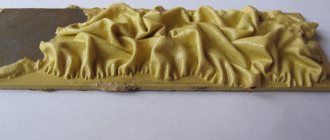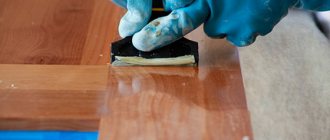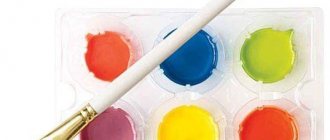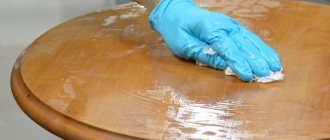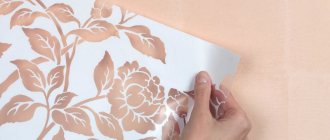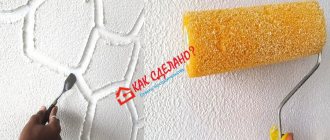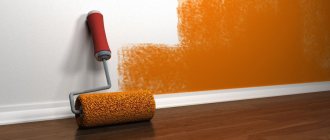An electric drill is perhaps the best “assistant” when carrying out repair and construction work. The tool allows you not only to make a hole in concrete or stone, to mix the solution, but also to carry out grinding, polishing and other operations for the mechanical processing of metal and wood products. To do this, you just need to buy a cord brush - an attachment for a drill that has a shank (a pin for fastening in the chuck of a power tool) and a pile made of different materials. A similar device is also called a brush. These products are used by both professionals and home craftsmen. The article discusses the functions, main types of brushes, and also lists their manufacturers. See other types of brushes on this page.
Advantages
The paint remover is very popular in Russia, Belarus, Ukraine, as well as other CIS countries. Initially it was used by folk craftsmen. Later, a simple and effective device began to be made in the factory. The invention went to the masses.
The paint remover has a number of advantages compared to other methods:
- Price. A simple and convenient attachment will cost much less than any professional brush for a drill or hammer drill.
- No dust. Most often, a professional or amateur paint removing tool works on the principle of a sandpaper or grater. The paint is peeled off the walls. At the same time, a huge amount of fine abrasive dust is formed in the room. The paint remover works on a different principle. It knocks large chunks of paint off the wall without creating much dust or dirt.
- Speed of work. Using a paint remover, you can process up to 4 square meters. m of surface per hour.
- Versatility. The nozzle is suitable for processing almost any surface: concrete, wood, metal, cinder block, sandstone.
- Environmental friendliness. When working with a paint remover, no toxic emissions from polymers are formed, as happens when removing paint with an industrial hair dryer or a metal brush.
- Careful work with electrical and low-current systems. The nozzle does not interrupt wiring hidden in the walls. It allows you to neatly bypass all communications and cables.
Thanks to these advantages, thousands of people have already purchased the paint remover. Many people take several kits at once to carry out work throughout the entire house or apartment.
For recommendations on applying paint to bathroom walls, see the article Painting bathroom walls.
How to properly plaster walls, see the source Plastering walls using beacons with your own hands.
Types of tools
Mechanical cleaning can be carried out with two types of tools: manual and electric.
Hand tools include:
- scraper,
- putty knife,
- axe,
- hammer,
- chisel,
- chisel.
Applicable electric tool:
- grinder with appropriate attachment,
- hammer drill,
- construction hair dryer,
- electric drill.
The greatest effect is achieved by using power tools, especially grinders (grinders) or hammer drills. Both tools can be equipped with several types of attachments, including:
- wire brush,
- grinding wheel,
- abrasive,
- spatula,
- Boer.
Below we will tell you in more detail about the features of using some types of tools.
Flaws
Despite all its advantages, the paint remover also has disadvantages:
- Dangerous job. Large areas of paint come off while working. Sometimes fragments come off along with pieces of putty or concrete. Such fragments may injure or injure a person. Therefore, it is necessary to observe safety precautions.
- High wear on the drill chuck. The paint remover works on the impact principle. Each chip of paint is equivalent to a blow from a hammer drill, so you need to choose a power tool according to certain criteria.
- A small resource. The nozzle links quickly wear out or even break. Usually one set is enough to treat the walls of 1 or 2 rooms.
- Rough finish. The paint flies off in chunks, making the wall surface rough. There are notches left on it. After such dismantling, additional preparation of the surface for finishing is necessary. Particular attention should be paid to working with wooden floors or other wood floors. The paint remover can leave deep dents in the wood. Large pieces of wood fly off of it.
Considering these disadvantages, we can say that the paint remover is suitable specifically for rough work.
Surface preparation
Before you begin removing paint, you need to prepare your work area. The nearby space will become heavily littered during work, so we do the following:
- We remove all the furniture from the room,
- If some items are too large and cannot be taken out, cover them with polyethylene,
- We cover the floor with plastic film, but don’t just lay it on the surface, but attach it to the baseboards with tape.
- We put on a respirator, safety glasses, rubber gloves and an apron.
Examples of using
Most often, paint removers are used specifically for cleaning walls from the old paint layer. However, it can also perform other tasks:
- Remove a thin layer of plaster or rottban. The most important purpose of a paint remover is to remove a layer of paint. But its power is enough for a small layer of plaster or putty.
- Cleaning joints between bricks and tiles. In some cases, it is necessary to remove excess mortar or tile adhesive that appears along the seams. This can be done using a paint remover. But you need to work extremely carefully.
- As a whisk for mixing paints or other not very thick solutions. A defective or worn-out nozzle is especially suitable for these purposes.
Before using the paint remover, read the safety instructions.
No danger to communications
This attachment very carefully removes the paint layer and at the same time does not damage various cables.
Also, the paint remover is very environmentally friendly, since when it is used, the paint does not heat up, which means that polymers do not decompose and toxins are not released.
This attachment is also very often used in old houses, approximately built in the 60s.
Because the paint in such houses is very toxic (it contains a lot of lead), it cannot be heated, otherwise it will be very harmful to health, and it also cannot be turned into dust.
Drill requirements
It is important to choose a power tool with the recommended parameters, otherwise the drill will quickly break down:
- Presence of reverse. This will allow you to work in different conditions.
- The presence of shock mode. As a rule, such drills are equipped with a more powerful chuck with high performance characteristics.
- Presence of speed controller. For walls with one layer of paint, low speeds are suitable, for walls with old coating or several layers - high speeds.
A drill with the specified characteristics will not break and will allow you to process almost any surface.
Hand tool
The following types of tools are most often used to remove paint:
- Axe. This well-sharpened device creates notches on the paintwork. Then the formed depressions are abundantly moistened with water, which, penetrating into the coating, softens it. Swollen peeling paint can be easily removed using the same ax.
- Hammer and chisel. The simplest, but also the most labor-intensive way to remove old coating.
- Scraper. This handheld tool is often used to remove paint. However, if there are several layers or we are talking about an old thick coating based on oil paint, a scraper will not help, and you will have to use more advanced methods.
Alternative methods
In addition to the paint stripper, there are other ways to treat walls.
- “Spatula” attachment for a hammer drill. The tool is switched to the “chipper” mode and the paint is pryed off on one side, as if digging under its layer. Reliable but time-consuming method.
- Brush attachment for drill. A whisk made of metal threads removes a layer of paint, forming a thick cloud of dust. A gentle and slow method that releases toxic substances.
- Professional sanding tool for walls. Average operating speed. High cost of the tool itself and consumables for it.
- Hot air gun. The walls are heated with an industrial hair dryer until the paint layer becomes elastic. During operation, a large amount of toxic fumes are released.
- Ax or spatula. The oldest and most proven method. However, it is also the most ineffective. The speed of working with an ax or spatula is much lower than when using a paint remover or other power tool.
How and with what to remove paint from concrete walls
Painting concrete walls is the simplest and most cost-effective way of cladding. But it often happens that the color becomes boring or wears out, resulting in the need to apply a new layer. Battery paint remover?
Before application, the old pigment must be removed. The same is done if the finishing is to be done using completely different materials, for example, wallpaper, tiles, plaster (otherwise adhesion - adhesion - will be low, almost zero).
Methods for removing different types of paint
Depending on their composition, all substances are divided into 3 large groups:
Video
Cleaning sander - 2 in 1 router RENOFIX RG 150 E
Specialist in processing large surfaces. With a working tool diameter of 150 mm and a wide range of accessories, the RG 150 E is the ideal tool for machining large surfaces.
Advantages
:
- Deburring milling cutter with optimal speed for processing soft materials, as well as the possibility of using diamond tools.
- Reliable and high-performance tool with 1,600 W motor
- Comfortable and safe handling thanks to the D-shaped handle
- Efficient suction and automatic sealing with brush flange
- Smooth, almost vibration-free running thanks to shock absorption of handles and working tools
- Constant speed under load.
In combination with a rod, easy removal of screed floors, coatings and adhesive residues is possible.
The ergonomic double D-handle fits perfectly in your hands in any working position.
View purchase options: with prices all Festul Renofix 150
Advantages
- Universal deburring router with ideal cutter speed for soft materials and the ability to use diamond tools. Compact, handy and highly productive thanks to 1,100 W electric motor
- Constant speed under load thanks to electronic control
- Protection against motor damage due to overload due to winding temperature monitoring.
- Clean air thanks to an effective dust extraction system.
A universal tool for medium-sized surfaces.
Incredibly high performance thanks to the 1,100 W motor.
View purchase options: with prices all Festul Renofix 80
What not to do and useful tips
It is not recommended to use the following products to remove paintwork:
- Heat treatment using open fire. This may cause a fire.
- Applying chemical removers in an unventilated area.
- Mechanical cleaning without personal protective equipment. During the process, a person is exposed to dust, toxins and particles of old coating, which can get into the eyes.
- A hair dryer or blowtorches next to sockets or wires.
- Lead paint should never be heated.
To carry out work safely, it is necessary to use protective clothing and glasses, protect furniture and interior items with plastic film.
Following simple rules will allow you to carefully prepare surfaces for further installation of a new coating.



